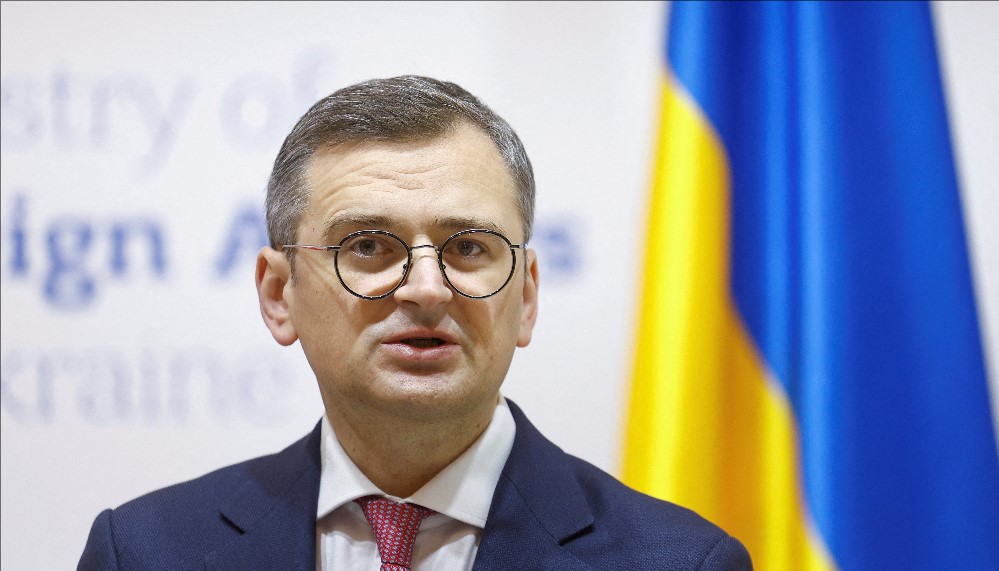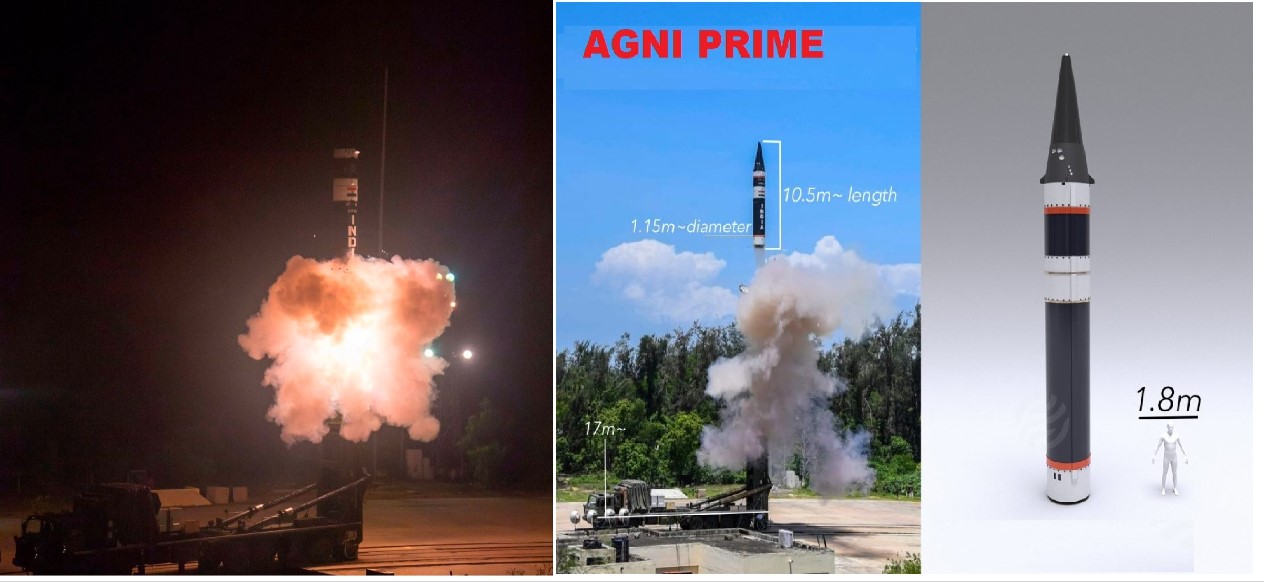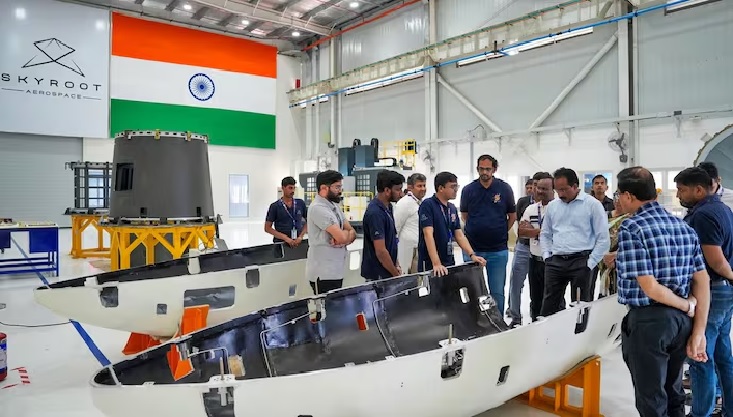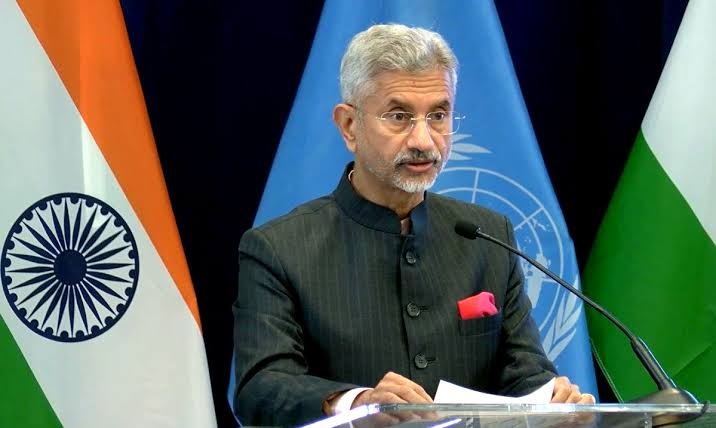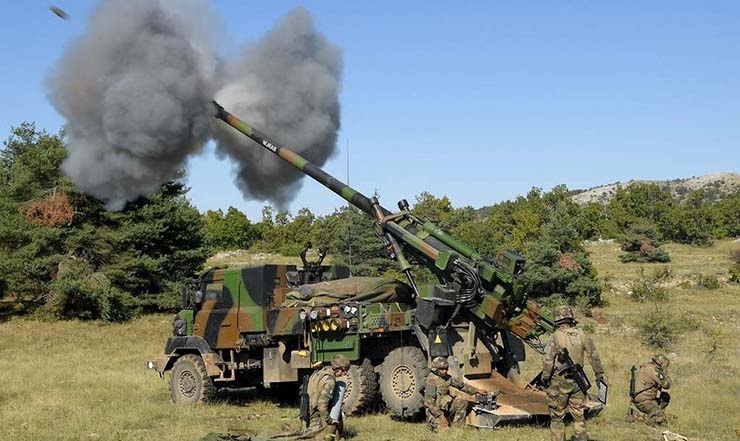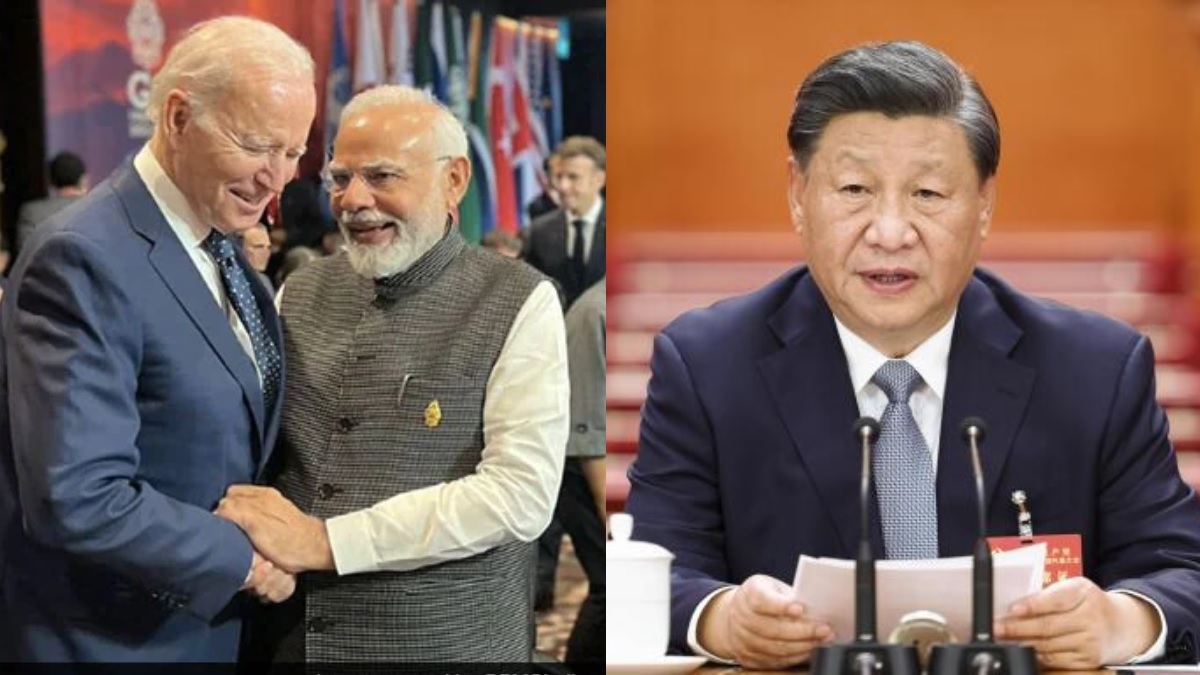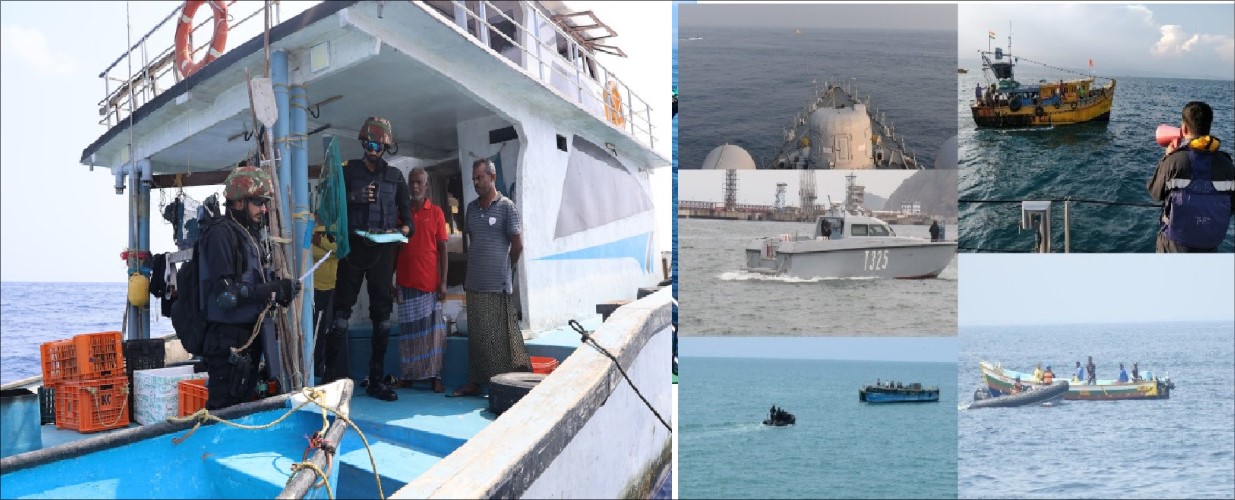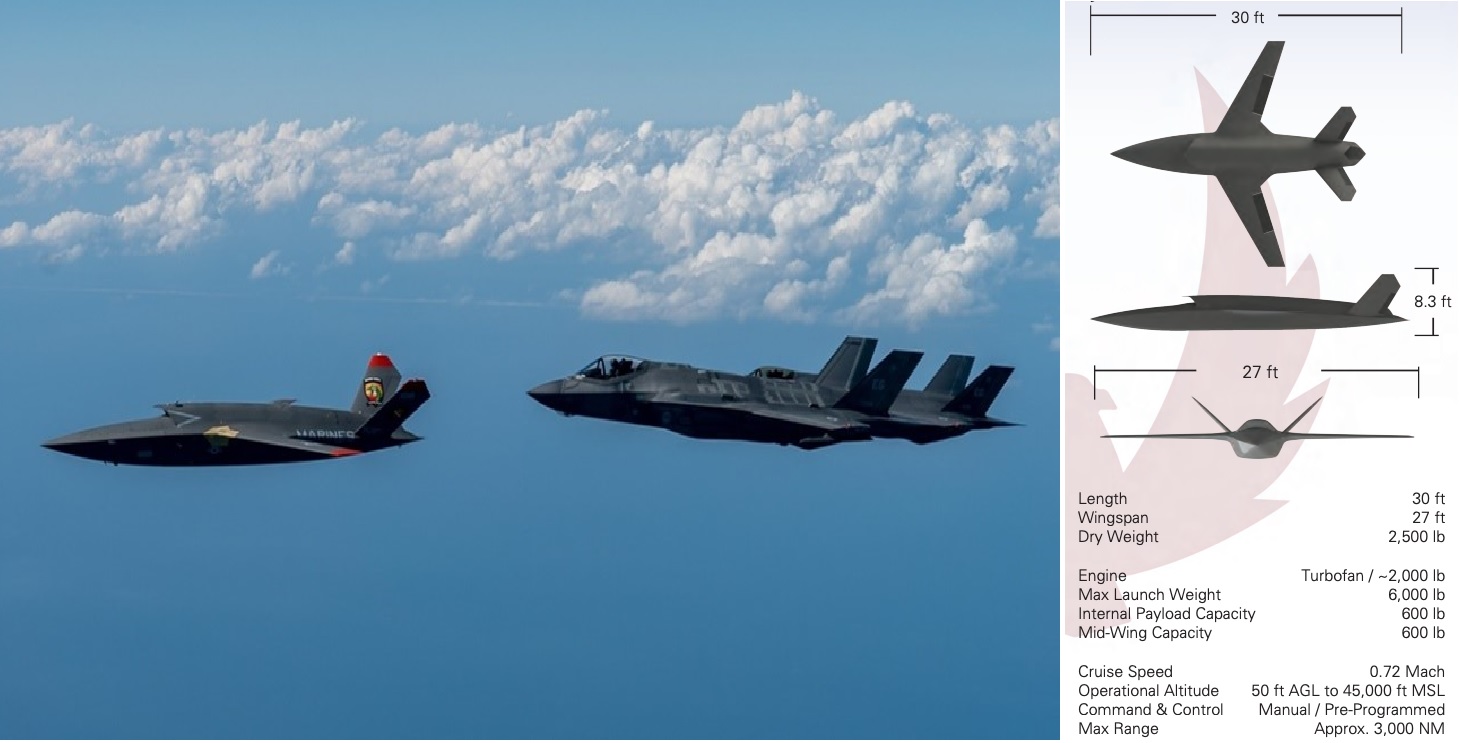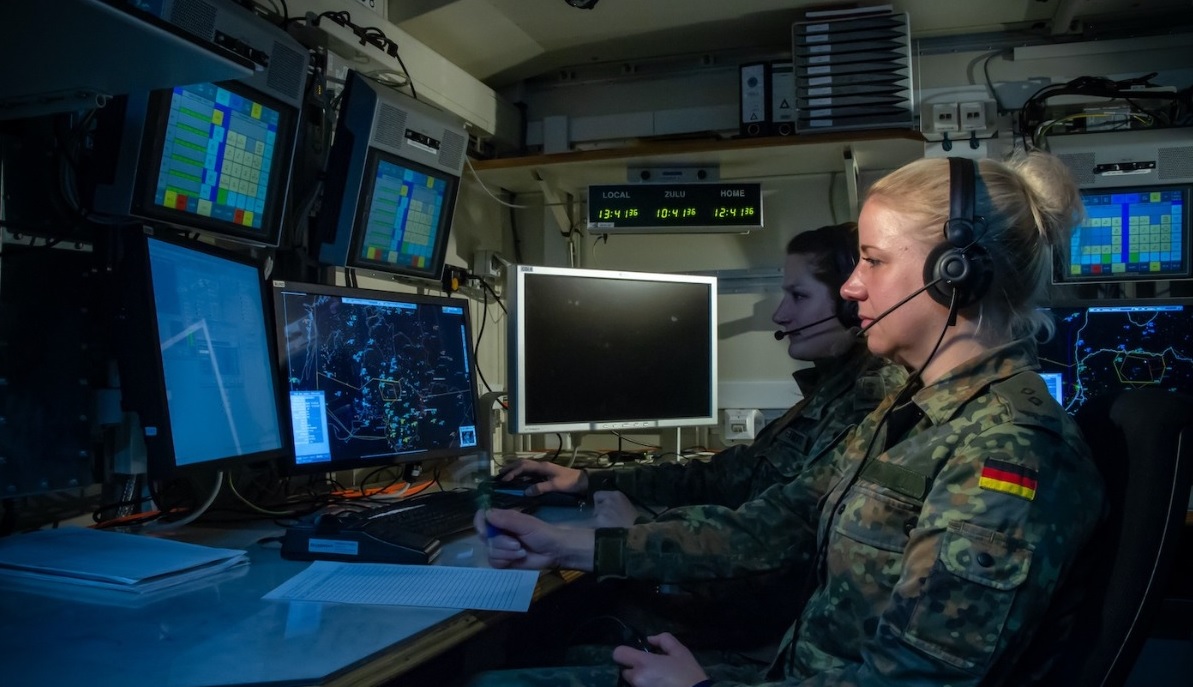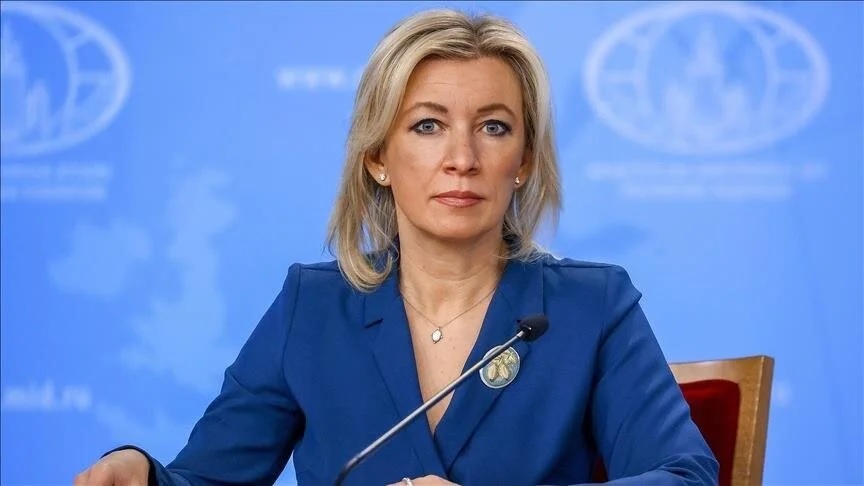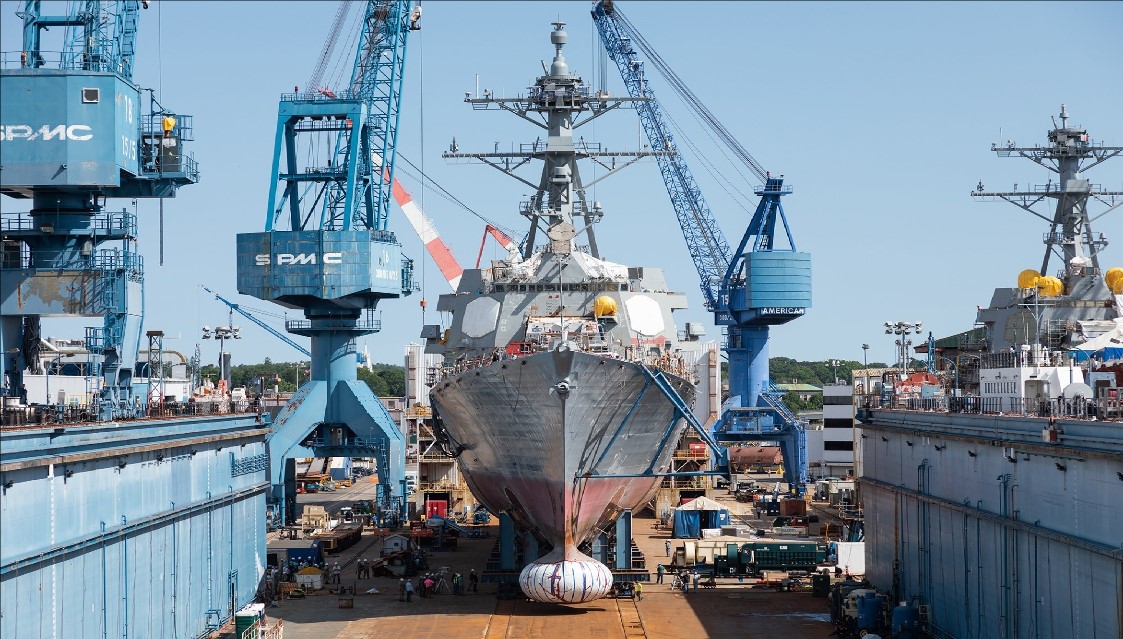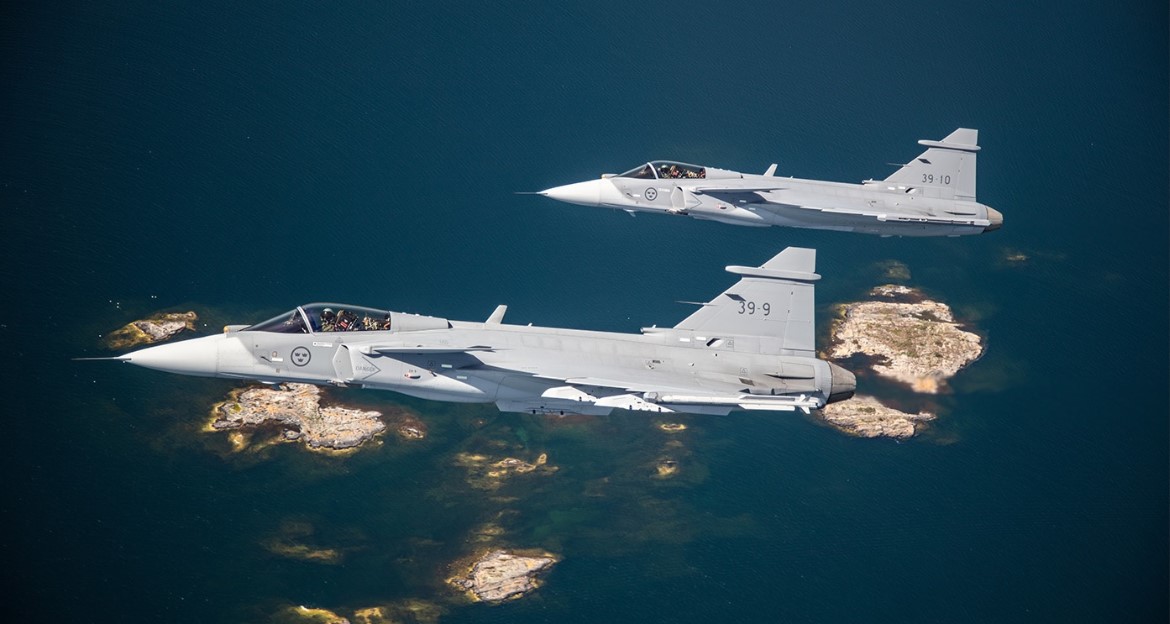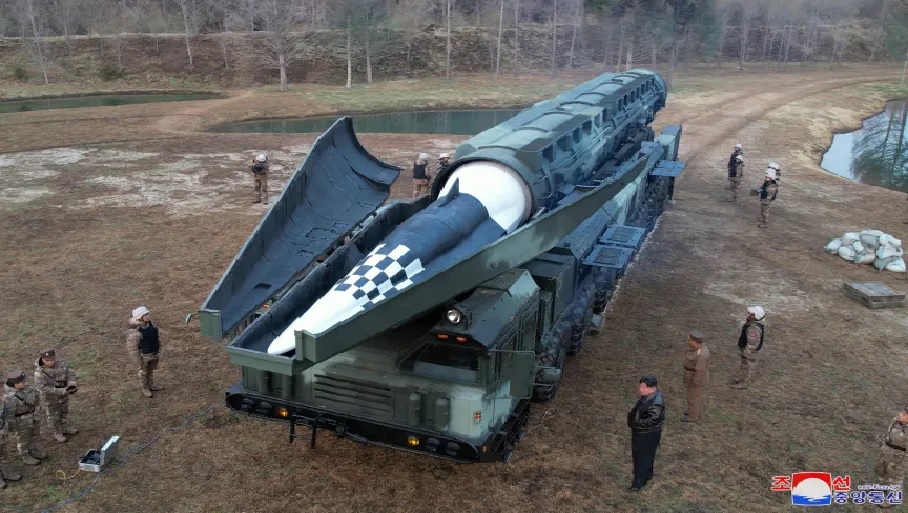World
Defense NewsUkraine Russia WarUkraine's partners are not providing enough air defence to protect against Russian missile attacks even though they have more than 100 Patriot systems in their own arsenals, Ukrainian Foreign Minister Dmytro Kuleba said on Wednesday.In an interview with Reuters, Kuleba said he would raise the issue of Patriot missile defence systems in every one of a series of meetings with NATO counterparts over the next two days in Brussels.In recent weeks, Russia has unleashed an increased barrage of attacks on Ukrainian cities and energy infrastructure, underscoring Kyiv's urgent need for protection."Partners did provide us with their different (air defence) systems, we appreciate that, but it's just simply insufficient, given the scale of the war," Kuleba said.He said Ukraine's partners had more than 100 Patriot systems at their disposal but had so far not been willing to share even five to seven more - the number that Kyiv says is the minimum needed to provide significant additional protection."Is it such a big problem? Is it not feasible to provide Ukraine with the minimum request?" Kuleba asked.Russia fired over 3,000 guided aerial bombs, 600 drones and 400 missiles at Ukraine in March alone, President Volodymyr Zelenskiy said on Wednesday.Kuleba said Russia's attacks in March involved 94 ballistic missiles, which are much faster than more commonly used cruise missiles, and harder to shoot down."Come on, guys. I mean ... this happens to us every day," Kuleba said, summarising his message to Ukraine's allies. "And the solution is there. It's just an issue of political will. So someone has to make the decision."Kuleba said it was not clear to him why allies were so far not providing extra Patriots, especially as Kyiv's partners did not face the missile threat that Ukraine faces every day.He argued that such support would help defeat Russia and prevent a larger war across Europe."When I say that Europe will be at war and missiles will be falling on Brussels and other European cities. I'm not exaggerating. All of this is going to happen if Ukraine doesn't win the war against Russia," he said."So the best way to save your Patriots from intercepting missiles (over your countries) and your soldiers from dying is to send your Patriots to Ukraine and give Ukrainian soldiers everything they need."Russian President Vladimir Putin has said Moscow has no interest in invading other European countries.Kuleba spoke as NATO foreign ministers met to discuss how to put military support to Ukraine on a longer-term footing.Asked about a proposal by NATO boss Jens Stoltenberg - which diplomats say includes a plan for a 100 billion euro fund for Ukraine over five years - Kuleba said he welcomed support but it should represent new funds and not repurpose prior commitments.He said NATO had struggled to raise 500 million euros for a Comprehensive Assistance Package to reform and equip Ukraine's armed forces, so stepping up to 20 billion a year would be a "gargantuan" effort."If this particular initiative is to become reality, we have to make sure that this will be (a) new 100 billion."
Read More → Posted on 2024-04-04 06:43:40Space & Technology
Space NewsNASANASA has chosen three private teams, led by Intuitive Machines, Lunar Outpost, and Venturi Astrolab, to develop Lunar Terrain Vehicles (LTVs) for the Artemis missions. These rovers will assist astronauts in exploring the moon's southern polar region starting in 2030.Intuitive Machines Moon RoverA concept of the Intuitive Machines Moon Racer rover driving on the lunar surface with astronauts aboard. (Image credit: Intuitive Machines)Lunar Outpost Moon RoverA concept of a Lunar Outpost moon rover driving on the lunar surface with astronauts aboard. (Image credit: Lunar Outpost)Venturi Astrolab Moon RoverArtist's concept of the Venturi Astrolab FLEX moon rover driving on the lunar surface with astronauts aboard. (Image credit: Astrolab)Vanessa Wyche, director of NASA's Johnson Space Center, expressed excitement about advancing lunar exploration through the development of these vehicles. They will enhance astronauts' ability to conduct science and exploration on the moon's surface.Over the next year, each team will refine its rover concept under a feasibility task order from NASA. Afterward, they'll compete for a task order to build and demonstrate their vehicle ahead of the Artemis 5 mission in 2030.NASA will purchase rover services rather than the LTVs themselves, similar to its contracts with SpaceX for cargo and crew delivery to the International Space Station.The total potential value of the LTV services contract is $4.6 billion. The selected team(s) will be responsible for building and delivering their rovers to the moon's south pole.The LTV will be the United States' first moon car since the Apollo 15 mission in 1971. Similar to the Apollo rover, it will be unpressurized and accommodate two astronauts. However, it will feature autonomous driving capabilities, a significant upgrade from its predecessor.The Artemis rover will serve as both a crewed and uncrewed science exploration platform, akin to NASA's Mars rovers, Curiosity and Perseverance.NASA aims to establish Artemis bases near the moon's south pole, believed to contain significant amounts of water ice.Artemis 1, the first mission, sent an uncrewed Orion capsule to lunar orbit in late 2022. Artemis 2 is scheduled to launch four astronauts around the moon in September 2025, followed by Artemis 3, which aims to land astronauts near the lunar south pole in 2026.NASA intends to have an LTV on the moon before the arrival of the Artemis 5 crew in 2030. Any earlier availability would be welcomed.The development of the LTV began in February 2020 when NASA solicited industry ideas for the next moon rover. After additional input in August 2021, NASA officially requested proposals in May of the following year.Intuitive Machines, one of the selected companies, achieved a significant milestone in lunar exploration in February by successfully landing its robotic Odysseus lander on the moon under a different NASA contract.
Read More → Posted on 2024-04-04 06:39:27World
Defense NewsFrance ,Germay ,PolandIn light of Russia's ongoing aggression in Ukraine, the foreign ministers of Germany, France, and Poland have jointly called for a stronger stance on European defense. Annalena Baerbock (Germany), Stéphane Séjourné (France), and Radoslaw Sikorski (Poland) emphasized the need to harness Europe's industrial capabilities to bolster military strength.In a guest article, the ministers stressed the importance of long-term contracts with clear timelines and financial commitments, along with purchase guarantees from European governments. They suggested that dedicating two percent of gross domestic product to defense could be just a starting point, indicating a willingness to invest more if necessary.On the occasion of NATO's 75th anniversary, the ministers acknowledged the historical role of the United States in shouldering a disproportionate burden within the alliance. However, they emphasized that collective defense requires a joint effort from all members.Regarding the conflict in Ukraine, the ministers reaffirmed their stance that European peace hinges on halting Russian imperialism. They emphasized the necessity of standing firm against aggression to ensure stability in the region.
Read More → Posted on 2024-04-04 06:27:02India
Defense NewsIndia & RussiaNational Security Advisor Ajit Doval on Wednesday met with his Russian counterpart Nikolay Patrushev and discussed measures to strengthen counter-terror cooperation. A special focus will be on the Afg-Pak and Eurasian region in the backdrop of the recent terror strike in the Moscow region that killed 144 people.The two NSAs, who met at the sidelines of Shanghai Cooperation Organisation in Kazakhstan, discussed countering terrorism both bilaterally and in multilateral formats, and emphasised on regular exchange of information about terrorist and extremist elements, sources told ET.Doval strongly condemned the "barbaric" terrorist attack at the Crocus City Hall in Moscow on March 22 and expressed condolences to the families who lost their loved ones. Doval conveyed India's solidarity with the government and the people of the Russian Federation and discussed addressing the threat from terrorism in all its forms and manifestations.
Read More → Posted on 2024-04-04 06:22:36India
Defense NewsIndiaIndia successfully conducted a nighttime test launch of the Agni-Prime ballistic missile, showcasing its enhanced strategic capabilities. Developed by the Defence Research and Development Organisation (DRDO), in collaboration with the elite strategic forces command, the test took place from Abdul Kalam Island off the coast of Odisha.The Agni-Prime, a two-stage solid-propellant missile, boasts a strike range between 1,000 and 2,000 km. This successful test, the first of its kind, validates the missile's reliability and accuracy, potentially leading to its induction into India's armed forces.Prior to the launch, India issued a Notice to Air Missions (NOTAM) for the area, indicating a planned test within a specific timeframe. Although the DRDO did not officially confirm the launch, its occurrence was corroborated by local sources.Replacing older Agni-I and Agni-II missiles, the Agni-Prime signifies a significant advancement in India's missile technology. Equipped with dual redundant navigation and guidance systems, including advanced ring laser gyro-based inertial navigation and micro inertial navigation systems, it offers enhanced precision and reliability.With its canisterized launcher and transportability by road and rail, the Agni-Prime ensures mobility and flexibility in deployment, further bolstering India's strategic deterrence capabilities. This successful test underscores India's commitment to developing indigenous defence technologies and strengthening its national security posture.
Read More → Posted on 2024-04-04 06:20:23Space & Technology
Space NewsIndiaSkyroot Aerospace, one of India's prominent players in the space industry, welcomed Dr. S Somanath, the chief of the Indian Space Research Organisation (ISRO), to its MAX-Q headquarters. This visit aimed to discuss advancements regarding the Vikram-I launch vehicle, slated for its inaugural launch in the third quarter of 2024.Skyroot Aerospace, founded by Pawan Kumar Chandana and Naga Bharath Daka, gained attention last year with the successful launch of Vikram-S, marking South Asia's first privately developed rocket. The company's focus now shifts towards the Vikram-I project, part of their strategy to cater to the growing demand for small satellite launches.Dr. Somanath's visit included a comprehensive tour of the MAX-Q facility, where he was acquainted with the Vikram-1 hardware. This next-gen rocket represents Skyroot's vision to introduce a series of small-lift launch vehicles tailored for the emerging small satellite market. Discussions also encompassed Skyroot's upcoming orbital launch endeavors.In March 2024, Skyroot achieved a milestone by conducting a successful test-fire of the second stage engine of Vikram-1, named Kalam-250. This test, carried out at ISRO's Satish Dhawan Space Centre in Sriharikota, was supported by the Vikram Sarabhai Space Centre (VSSC), providing a proprietary head-mounted safe arm (HMSA) device for ensuring operational safety. The solid propellant used in Kalam-250 was sourced from Solar Industries' facility in Nagpur.This recent accomplishment builds upon Skyroot's earlier success in testing the Kalam-100, the third stage of Vikram-1, back in June 2021.The collaboration between ISRO and the private sector, exemplified by Skyroot Aerospace's endeavors, underscores India's ambition in space exploration and technology. With ongoing developments and strategic partnerships, India is poised to make significant strides in the global space arena.
Read More → Posted on 2024-04-04 06:12:47India
Defense NewsIndiaIn a recent address at the Gujarat Chamber of Commerce and Industry, External Affairs Minister S. Jaishankar shed light on significant historical exchanges between India's founding leaders regarding international diplomacy and security challenges.Jaishankar highlighted a pivotal discussion between India's first Prime Minister, Jawaharlal Nehru, and his deputy, Sardar Vallabhbhai Patel, regarding India's aspirations for a permanent seat at the United Nations Security Council (UNSC). Contrary to expectations, Nehru advocated for China's inclusion in the UNSC before India, despite Patel's warnings about potential threats from China. Patel expressed concerns about facing simultaneous challenges from both Pakistan and China, a situation unprecedented in India's history. However, Nehru dismissed these concerns and prioritized China's UNSC seat over India's.Moreover, Jaishankar referenced Sardar Patel's opposition to taking the Kashmir issue to the United Nations. Patel believed in dealing with the matter internally, considering the UN's potential biases. Nonetheless, India decided to raise the Kashmir issue at the UN in 1948, resulting in subsequent complexities and pressures.Jaishankar emphasized India's ongoing efforts to address historical challenges inherited by successive governments over the past decade. Despite facing complexities in boundary disputes and territorial issues, the government remains steadfast in asserting India's boundaries while acknowledging the need for continued efforts to resolve inherited challenges.The revelations made by Jaishankar offer insights into India's historical diplomatic decisions and the enduring challenges it faces on the international stage. These reflections underscore the complexities of navigating international relations while safeguarding national interests and territorial integrity.
Read More → Posted on 2024-04-03 16:26:14World
Defense NewsIsraelIsrael’s defense chief said Wednesday a strike that killed seven aid workers in Gaza was a “grave mistake” after the deaths prompted a chorus of international outrage. “This incident was a grave mistake,” IDF chief Herzi Halevi said in a video message after the strike that hit a World Central Kitchen (WCK) convoy delivering aid on Monday. “It shouldn’t have happened,” Halevi said, as he blamed the strike on a nightime “misidentification.” “We are sorry for the unintentional harm to the members of WCK.” AFPTV footage from the scene showed the punctured roof of a vehicle emblazoned with WCK’s logo alongside the mangled wreck of other vehicles. Since the October start of the war, the US-based charity has been involved in feeding displaced Gazans and was one of two organizations spearheading the delivery of food aid arriving by sea. The employees killed on Monday had just unloaded “more than 100 tons of humanitarian food aid brought to Gaza on the maritime route,” WCK said. The attack, which killed Australian, British, Palestinian, Polish, and US-Canadian staff, was widely condemned, with world leaders demanding an investigation. In a strongly worded statement, US President Joe Biden said Israel “has not done enough to protect aid workers trying to deliver desperately needed help to civilians.” He called for a “swift” investigation to bring accountability to what he said was not a “stand alone incident.” UN Secretary-General Antonio Guterres told the General Assembly that 196 humanitarian workers have been killed in the war. He called the strike “unconscionable” but “an inevitable result of the way the war is being conducted.” “It demonstrates yet again the urgent need for an immediate humanitarian ceasefire.” Anger and Concern WCK said it was mourning the loss of its seven “heroes,” naming them on Wednesday as Palestinian Saifeddine Issam Ayad Abutaha, 25; Australian Lalzawmi (Zomi) Frankcom, 43; Pole Damian Sobol, 35; American-Canadian Jacob Flickinger, 33; and Brits John Chapman, 57, James (Jim) Henderson, 33, and James Kirby, 47. “These 7 beautiful souls were killed by the IDF in a strike as they were returning from a full day’s mission,” WCK CEO Erin Gore said. The organization called the strike a “targeted attack” and said its team had been coordinating its movements with the Israeli forces. “This is not only an attack against WCK, this is an attack on humanitarian organizations showing up in the most dire of situations where food is being used as a weapon of war,” Gore said in an earlier statement. Gaza has been under Israeli blockade since the start of the war, with the United Nations accusing Israel of preventing humanitarian aid deliveries and warning of “catastrophic” hunger. World Central Kitchen was facilitating the provision of supplies brought by sea from Cyprus. Following the strike, it said it was suspending its operations in the region, deepening concerns about how urgently needed food aid would reach a starving population. Cyprus said on Tuesday that the aid ship the Jennifer was returning to the Mediterranean island with around 240 tonnes of supplies that had not been unloaded. Israeli Prime Minister Benjamin Netanyahu said the military had “unintentionally” killed the aid workers, calling it a “tragic case” that would be investigated “right to the end.” He did not, however, apologize. Australian Prime Minister Anthony Albanese said he spoke to Netanyahu by phone, raising his “anger and concern.” Britain summoned the Israeli ambassador to London and demanded “full accountability.” And Poland demanded compensation for the families of the killed aid workers. The bodies of the six foreign aid workers were to be sent to Gaza’s southern border on Wednesday before being repatriated, according to Marwan al Hams, the director of a hospital in the territory’s southern city Rafah. ‘Traitor’ The aid workers’ deaths come as relentless Israeli strikes continue to pound the territory, flattening critical infrastructure, all but collapsing the health system, and pushing more than half the population to the brink of famine. Overnight, Israeli strikes killed at least 60 people, the health ministry in Hamas-run Gaza said Wednesday. Regional tensions have also surged after Israel was blamed for an air strike on the consular annex of the Iranian embassy in Syria’s capital Damascus on Monday that killed seven Revolutionary Guards, two of them generals. Tehran, which backs Hamas and other groups fighting Israel and its allies across the region, has vowed revenge. Netanyahu has promised to push on with the war to destroy Hamas despite nightly protests demanding he step down. The bloodiest-ever Gaza war erupted with Hamas’s October 7 attack, which resulted in about 1,160 deaths in Israel, mostly civilians, according to an AFP tally of Israeli official figures. Israel’s retaliatory campaign has killed at least 32,916 people, mostly women and children, according to the health ministry in Hamas-run Gaza. During their attack on Israel, Palestinian militants also seized around 250 hostages. Israel believes about 130 remain in Gaza, including 34 who are presumed dead. The families of the Israeli hostages have blasted Netanyahu and staged four consecutive nights of protests. Thousands gathered in front of the country’s parliament Tuesday, with former prime minister Ehud Barak blaming Netanyahu for the October 7 “disaster” and demanding an election. Einav Zangauker, whose son Matan is still held in Gaza, accused Netanyahu of trying to blacken the reputation of the hostage families. “You call us traitors when you are the traitor, a traitor to your people, to the State of Israel,” Zangauker said. The Palestinians, meanwhile, have revived their application to become a full member state in the United Nations. In a letter to UN chief Guterres seen by AFP, Palestinian UN envoy Riyad Mansour requested “upon instructions of the Palestinian leadership” that an application dating back to 2011 be reconsidered this month by the Security Council.
Read More → Posted on 2024-04-03 16:21:43World
Defense NewsFranceFrench artillery manufacturer Nexter, a key player in the defense sector, is bolstering its production of self-propelled howitzers. The company, a part of the KNDS group, is notably ramping up the manufacturing of the CAESAR artillery systems.During a visit to the Nexter facility on April 2, French Minister of Armed Forces Sébastien Lecornu announced the company's efforts to increase CAESAR production. This move is directly tied to France's support for the Armed Forces of Ukraine.Previously capable of producing two CAESAR howitzers per month in 2022, Nexter has now tripled its output, reaching a level of 6 howitzers monthly. Minister Lecornu revealed that the company aims to further double this rate, reaching 12 CAESAR howitzers per month, though he didn't specify an exact timeline for achieving this goal, only mentioning it would occur "soon".The increase in production has been made feasible by reducing the time needed to manufacture the artillery system. Currently, the production cycle for a CAESAR howitzer spans 44 months, but Nexter plans to slash this to just 18 months. The CAESAR, a 155mm caliber artillery system, has proven its effectiveness in real combat situations, notably in Ukraine.According to official information from the French Ministry of Armed Forces, France has supplied the Armed Forces of Ukraine with 30 CAESAR howitzers on a 6×6 chassis configuration. Additionally, Denmark has contributed to Ukraine's defense efforts by delivering 19 howitzers on an 8×8 chassis.
Read More → Posted on 2024-04-03 16:15:06World
Defense NewsU.SThe United States officials have categorically denied any involvement in the Israeli airstrike on Iran’s consular annex building in Damascus, Syria. The strike, which occurred on Monday, resulted in the deaths of over a dozen individuals, including senior members of Iran's Revolutionary Guards.According to National Security Council spokesman John Kirby, the US had no role in the strike and was not informed about it beforehand. Kirby dismissed Iran's foreign minister's claims that the US, as Israel's main supporter, was responsible for the attack as "nonsense."Deputy Pentagon Press Secretary Sabrina Singh echoed Kirby's statement, confirming that US forces were not involved in the strike. Singh emphasized that the US conveyed this message to Tehran through private channels.Iranian state media reported that 13 people, including seven members of Iran's Revolutionary Guards and six Syrian nationals, were killed in the airstrike. Among the casualties were two high-ranking commanders of the Revolutionary Guards, Brigadier General Mohammad Reza Zahedi and Brigadier General Mohammad Hadi Haji Rahimi.Singh stated that while the US believes senior Revolutionary Guards leaders were among those killed, they have not been able to independently confirm their identities.Israel has refrained from commenting on the airstrike. Tehran has vowed to retaliate for the attack, which has heightened tensions in the region. However, the US maintains that it had no involvement and seeks to communicate this message to Iran through diplomatic channels.
Read More → Posted on 2024-04-03 16:11:57World
Defense NewsUkraine Russia WarNATO is debating a plan to provide more predictable military support to Ukraine in coming years as better armed Russian troops assert control on the battlefield, the organisation's top civilian official said Wednesday. "We strongly believe that support to Ukraine should be less dependent on short-term, voluntary offers and more dependent on long-term NATO commitments," NATO Secretary-General Jens Stoltenberg said before chairing a meeting of the alliance's foreign ministers in Brussels.Earlier on Wednesday, Ukraine lowered the military conscription age from 27 to 25 to help replenish its depleted ranks after more than two years of war. A shortage of infantry combined with a severe ammunition shortfall has helped hand Russian troops the initiative."The reason why we do this is the situation on the battlefield in Ukraine. It is serious," Stoltenberg told reporters. "We see how Russia is pushing, and we see how they try to win this war by just waiting us out."The plan is to have NATO coordinate the work of the Ukraine Defense Contact Group - a forum of around 50 countries that has regularly gathered during the war to drum up weapons and ammunition for Ukraine - rather than the US European Command.US Gen Christopher Cavoli is NATO's top military commander as well as the head of US European Command, so the person in charge would not change. But Stoltenberg said a formal "institutional framework" is needed as the war drags on and that NATO can provide it.While the move would not see NATO directly providing weapons to Ukraine - as an organisation with 32 members that functions by consensus, the allies only agree to send non-lethal aid like demining equipment, fuel and medical supplies -- it would mark a new phase in its involvement in the war.NATO is desperate to do more for Ukraine, particularly while Russia holds a military advantage, but its members are not ready to offer the country their ultimate security guarantee: membership. Nor do they want to be dragged into a wider war with a nuclear-armed military power like Russia.Under the new plan, which is expected to be endorsed by US President Joe Biden and his counterparts at their next summit in Washington in July, NATO would coordinate the military side of Ukraine support efforts by assessing Ukraine's needs, collecting pledges and running meetings.The Financial Times newspaper reported that the multi-year plan could involve up to USD 100 billion, but Stoltenberg declined to provide details.Western pledges of support to Ukraine have been marred by broken promises. A European vow to provide 1 million rounds of ammunition fell woefully short, and financial aid meant for Ukraine's war-stricken economy was delayed by political infighting in Europe and is still blocked in the US."It's dangerous to make promises that we can't keep," Belgian Foreign Minister Hadja Lahbib told reporters when asked how much her country might be willing to contribute to a USD 100-billion fund. She said the plan requires more discussion.Stoltenberg again urged Congress to overcome its differences and pass a supplemental spending bill, which includes roughly USD 60 billion in military aid for Ukraine, saying that the continued delay "has consequences" on the battlefield."That's one of the reasons why the Ukrainians have to ration the number of artillery shells, why they have problems standing up against the Russian force with overwhelming military power," he said. Russian troops, he added, "are able to outgun them with more ammunition and more artillery."
Read More → Posted on 2024-04-03 16:08:28India
Defense NewsIndiaThe United States has made it clear that it strongly opposes China's attempts to assert claims over Indian territory, particularly in Arunachal Pradesh. This opposition was reiterated by a representative of the US State Department, who emphasized that any unilateral efforts to advance territorial claims, whether through military or civilian means, across the Line of Actual Control are not acceptable.This stance from the US aligns with its previous statements, affirming Arunachal Pradesh as Indian territory. The State Department's position was reaffirmed in response to China's recent actions, wherein it renamed 11 places in Arunachal Pradesh using Chinese characters, Tibetan, and pinyin, following rules set by China's cabinet, the State Council.India, on its part, has promptly rejected China's attempt to rename these places within Arunachal Pradesh. The Ministry of External Affairs has voiced its outright refusal to accept such actions by China, maintaining India's sovereignty over the region.
Read More → Posted on 2024-04-03 16:05:44India
Defense NewsIndiaMaritime security agencies of the country conducted a two-day exercise off the Lakshadweep Islands on April 1-2, aimed at testing coastal security mechanisms against potential threats from the sea. Known as Sagar Kavach 01/24, the exercise involved assets from the Indian Navy, Coast Guard, Marine Police, fisheries, customs, and other security agencies.Officials stated that the exercise focused on validating the effectiveness of coastal security measures in dealing with asymmetric threats originating from the sea. The event showcased enhanced preparedness, response capabilities, surveillance, and coordination among the various stakeholders involved in coastal security.During the exercise, scenarios simulating potential threats were enacted to evaluate the response of maritime security agencies. This included assessing their ability to detect, intercept, and neutralize threats to ensure the safety and security of coastal areas.The exercise emphasized the importance of coordination and collaboration among different agencies to safeguard maritime interests and protect coastal communities from potential threats. Officials highlighted the significance of such exercises in maintaining vigilance and readiness to address evolving security challenges in the maritime domain.Overall, Sagar Kavach 01/24 served as a platform for maritime security agencies to assess and enhance their capabilities in securing the nation's coastal borders and responding effectively to emerging threats.
Read More → Posted on 2024-04-03 16:01:26World
Defense NewsU.SKratos Defense and Security Solutions recently showcased the electronic warfare prowess of the XQ-58A Valkyrie unmanned aerial system for the US Marine Corps at Eglin Air Force Base, Florida.During the demonstration, the XQ-58A flew alongside two F-35 Lightning II combat aircraft and executed an integrated electronic attack.Equipped with electronic warfare payload, the tactical drone identified, tracked, and geolocated multiple targets. It then relayed coordinates to collaborative equipment and successfully delivered non-kinetic effects against simulated threats without human intervention.The successful completion of all flight evaluations during the trial paves the way for the Marines to proceed with the next stages of the program. The US Air Force's 40th Flight Test Squadron, 96th Test Wing, provided additional support for the demonstration.Steve Fendley, President of Kratos Unmanned Systems Division, expressed excitement about the mission capability demonstrated during the flight. He highlighted the cost-effectiveness of the technology, the elimination of risk to human pilots, and the protection of expensive manned platforms.The Eglin activity marked the conclusion of the initial phase of the Penetrating Affordable Autonomous Collaborative Killer – Portfolio (PAACK-P) initiative. This program aims to establish collaboration between "wingman" drones and piloted fighter jets for various military missions.The XQ-58A Valkyrie, with its maiden flight for PAACK-P conducted at the same site in October 2023, plays a pivotal role in this initiative. Fendley emphasized the importance of these technologies in achieving effective, survivable, and affordable mass for modern military operations.The XQ-58 Valkyrie boasts impressive specifications, including a length of 30 feet, a wingspan of 27 feet, a cruise speed of 476 knots, and a range of up to 3,000 nautical miles. With a maximum takeoff weight of 6,000 pounds and an altitude capability of 45,000 feet, it stands as a versatile asset for military missions.In collaboration with Northrop Grumman and the Marine Corps, Kratos continues to pioneer advancements in unmanned aerial systems, contributing to the development of critical capabilities for 21st-century warfare.
Read More → Posted on 2024-04-03 15:57:05World
Defense NewsGermanyThe German Deployable Control and Reporting Centre (DCRC), nicknamed Red Hawk, is now fully operational at Ämari Air Base in Estonia. Led by Lieutenant Colonel Sebastian S., the DCRC is set to enhance NATO's command and control capabilities in the Baltic Sea region starting April 1, 2024.Germany's contribution to NATO's enhanced Air Policing in the Baltic includes four Eurofighters from the 74th Tactical Air Wing at Neuburg, Germany, along with the ground-based DCRC from the 3rd Control and Reporting Area at Schönewalde, Germany.Equipped with state-of-the-art radar systems tightly integrated into the BALTNET data network and NATO's Integrated Air and Missile Defence System (NATINAMDS), the DCRC is tasked with surveilling and identifying air movements in its designated airspace. Additionally, it can provide tactical control to Allied weapon systems like the German Eurofighters stationed in Lielvarde, Latvia, during alert and training scrambles under NATO Air Policing.Following completion of preparations and construction in March, the DCRC team, operating under the call sign Red Hawk, conducted integration tests to confirm readiness for their NATO mission until the summer. From monitoring civil air traffic to detecting unidentified aircraft in international airspace over the Baltic Sea, the radar systems of Red Hawk provide comprehensive coverage.The DCRC operates through collaboration among specialists utilizing various technologies to create, identify, and evaluate a detailed air picture. Its primary objectives include monitoring airspace on NATO's eastern flank and supporting the tactical leadership of air operations for NATO's Baltic Air Policing mission.Safety in air operations is paramount, with close coordination maintained with military air defense units of Estonia, Latvia, and Lithuania, as well as civil air traffic control agencies in the Baltics.In addition to airspace surveillance, the German DCRC at Ämari also facilitates training and exercises, conducting simulations of various scenarios internally and with allied forces. This includes drills focused on identifying unknown aircraft and controlling fighter jets during training intercepts.Overall, the deployment of the German DCRC "Red Hawk" marks a significant step in bolstering NATO's air surveillance capabilities in the Baltic region, ensuring the security and stability of allied airspace.
Read More → Posted on 2024-04-03 15:52:42World
Defense NewsRussiaRussia said on Wednesday that NATO had returned to a Cold War mindset as the alliance marks its 75th anniversary this week."Today, in relations with Russia, the bloc has returned to Cold War settings," Foreign Ministry spokeswoman Maria Zakharova told reporters.She said NATO has no place in the "multipolar world" that Moscow says it seeks to build in order to end U.S. dominance, but that it remains the focus of Russian attention.President Vladimir Putin launched what he called his "special military operation" in Ukraine in 2022 with the stated aim of preventing NATO from expanding its footprint close to Russia. But the war has served to galvanise the alliance, which has expanded to 32 members by admitting Finland and Sweden.NATO foreign ministers were meeting in Brussels on Wednesday to discuss proposals that would give the alliance a more direct role in coordinating the supply of arms, ammunition and equipment to Ukraine.Western governments say they are helping Ukraine fight for its survival in the face of Russia's invasion. Zakharova said NATO's history was "full of aggressive adventures that brought wars and destruction to many nations", and its anniversary was no cause for celebration.
Read More → Posted on 2024-04-03 15:49:28World
Defense NewsU.SA recent review by the US Navy has revealed significant delays in nine of its crucial shipbuilding projects, with some falling behind schedule by up to three years.The delivery of the navy's first Columbia-class submarine, vital for strategic deterrence, is now expected to be delayed by 12 to 16 months. Originally slated for launch by October 2027, the submarine, dubbed the "USS District of Columbia," is being constructed by General Dynamics.Similarly, the third Gerald Ford-class aircraft carrier faces a delay of up to 26 months, despite construction beginning in 2022 under manufacturer Huntington Ingalls Industries (HII).The review highlights that the navy's first Constellation-class frigate, being built by Fincantieri Marinette Marine, is already 36 months behind schedule. Additionally, delays of 36 and 24 months are projected for the fourth and fifth blocks of the Virginia-class submarine program, respectively.In total, these delays amount to over 11 years, posing a significant challenge to the navy's efforts to modernize its fleet promptly in preparation for potential conflicts in the Indo-Pacific region.Nickolas Guertin, the Navy's senior acquisition executive, acknowledged the need to address these issues urgently. While plans of action and initiatives are yet to be fully developed, Guertin emphasized the importance of looking ahead, particularly in terms of procuring shipbuilding materials.The delays were largely attributed to disruptions in the supply chain caused by the COVID-19 pandemic. Guertin stressed the necessity of adopting a longer-term perspective in procurement practices to mitigate such challenges in the future.The US Navy faces substantial setbacks in its shipbuilding programs, necessitating immediate attention and proactive measures to address the underlying issues and ensure timely completion of vital projects.
Read More → Posted on 2024-04-03 15:47:08India
Defense NewsIndia & MaldivesMaldives President Mohamed Muizzu has said that Indian military personnel manning the second aviation platform would be withdrawn "within the current month" and reiterated that the entire process would be completed by May 10, a media report said here on Wednesday. Muizzu's statement comes three weeks after the first batch of approximately 25 Indian military personnel stationed in the Maldives manning a helicopter gifted by India departed from the island nation after handing over the operations of the chopper to an Indian civilian crew as agreed ahead of the March 10 deadline.Eighty-eight Indian military personnel were operating two helicopters and a Dornier aircraft which were providing humanitarian and medical evacuation services in this archipelagic nation.Following a high-level meeting in New Delhi on February 2 between the two sides, India agreed to replace its military personnel operating the three aviation platforms in the Maldives by May 10. The first batch left the island nation well before March 10.State-owned Public Service Media reported that Muizzu made the fresh statement during a public meeting. He also reiterated his commitment to preserving Maldives' independence, emphasising that his government is dedicated to fulfilling this promise.The President elaborated that, in line with agreements reached between parties, the withdrawal process of Indian military personnel is already underway.He said that the troops stationed on the second platform will be withdrawn within the current month, while those on the third platform will be withdrawn by May 10, psmnews.mv reported.Muizzu, seen as a pro-China leader, has repeatedly affirmed that no Indian military personnel, not even those in civilian clothing, would be present inside his country after May 10.Last year, Muizzu rode to power on an anti-India stance and within hours of taking oath, demanded India to remove its personnel from the strategically located island nation in the Indian Ocean.Since assuming office as the President in November, Muizzu has travelled to Beijing in January and met China's top leadership to cement the Male-Beijing relationship.Muizzu's government has also signed a defence agreement with the Chinese military under which the People's Liberation Army will assist the Maldivian security and defence forces.Last week, the Maldives Industrial Development Free Zone under the State Trading Organisation and China Harbour Engineering Company Limited signed a Memorandum of Understanding to establish an Agriculture Economic Zone in the Maldives by reclaiming land from Uthuru Thila Falhu for sustainable agriculture purposes.
Read More → Posted on 2024-04-03 15:42:04World
Defense NewsSwedenSaab has secured a significant contract from the Swedish Defence Materiel Administration (FMV) for the procurement of extra LITENING 5 target designator pods, alongside maintenance capabilities. The deal, valued at SEK 390 million, underscores the importance of these pods in modern air combat.LITENING 5 pods play a crucial role in the precise targeting of objectives through laser guidance and tracking. Developed by Rafael Advanced Defense Systems, these pods are utilized on fighter jets to enhance target identification and designation during missions.The latest version of LITENING 5 offers several key features: Improved Sensors: Higher resolution short and medium-wave infrared cameras enhance image quality and target recognition range.All-Weather Capability: Effective functionality during day, night, and adverse weather conditions.Laser Targeting: Ability to designate targets with a laser for precise strikes using laser-guided bombs.Synthetic Aperture Radar: Provides a radar image of the target area with a range of 100 km, aiding pilots in understanding the surroundings.Platform Compatibility: Integration with Gripen and Typhoon aircraft.Saab's provision of maintenance capabilities ensures that the Swedish Armed Forces can maintain these pods domestically. The pods and maintenance capabilities are set to be delivered to FMV in 2026.This recent contract follows a previous order placed by FMV for LITENING 5 pods for Gripen fighter jets, highlighting the increasing importance of these systems in modern air warfare.
Read More → Posted on 2024-04-03 15:38:44World
Defense NewsNorth KoreaNorth Korea has announced the successful testing of a new solid-fuelled hypersonic intermediate-range missile (IRBM), as part of its ongoing efforts to bolster its weapons program. The state-run Korean Central News Agency (KCNA) reported the test, which occurred shortly after South Korea and Japan detected the launch of a missile from North Korea towards the east.Photos released by KCNA showed leader Kim Jong Un alongside military commanders, showcasing the Hwasong-16B missile. Kim praised the missile as a demonstration of North Korea's defense capabilities, stating that Pyongyang has developed nuclear-capable solid-fuel systems for various types of missiles.The Hwasong-16B reportedly flew approximately 1,000km (621 miles) with a peak altitude of 101km (62 miles), before splashing down in the sea between South Korea and Japan. North Korea's focus on solid-fuel weapons is attributed to their ease of concealment, mobility, and quick launch capabilities compared to liquid-propelled weapons.Hypersonic weapons, which travel at speeds exceeding five times the speed of sound and are maneuverable in flight, have been a priority for North Korea's missile development. Analysts suggest that if perfected, these weapons could potentially reach remote US targets in the Pacific, such as Guam.Tensions in the region have heightened since 2022, with North Korea using distractions such as Russia's invasion of Ukraine to accelerate its missile testing. In response, the US and South Korea have intensified their combined training and cooperation with Japan, aiming to strengthen deterrence against North Korean threats.
Read More → Posted on 2024-04-03 15:32:45Search
Top Trending
-
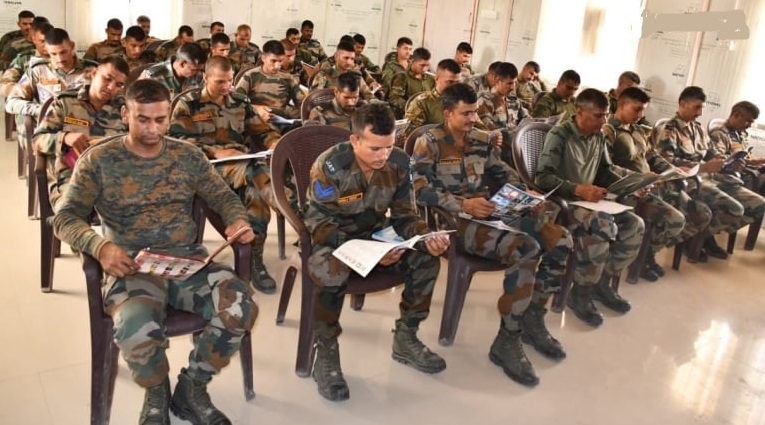 Agneepath Scheme replaced with Sainik Samman Scheme 2024, Defence Minister Rajnath Singh Relaunched Agniveer Scheme
Agneepath Scheme replaced with Sainik Samman Scheme 2024, Defence Minister Rajnath Singh Relaunched Agniveer Scheme
-
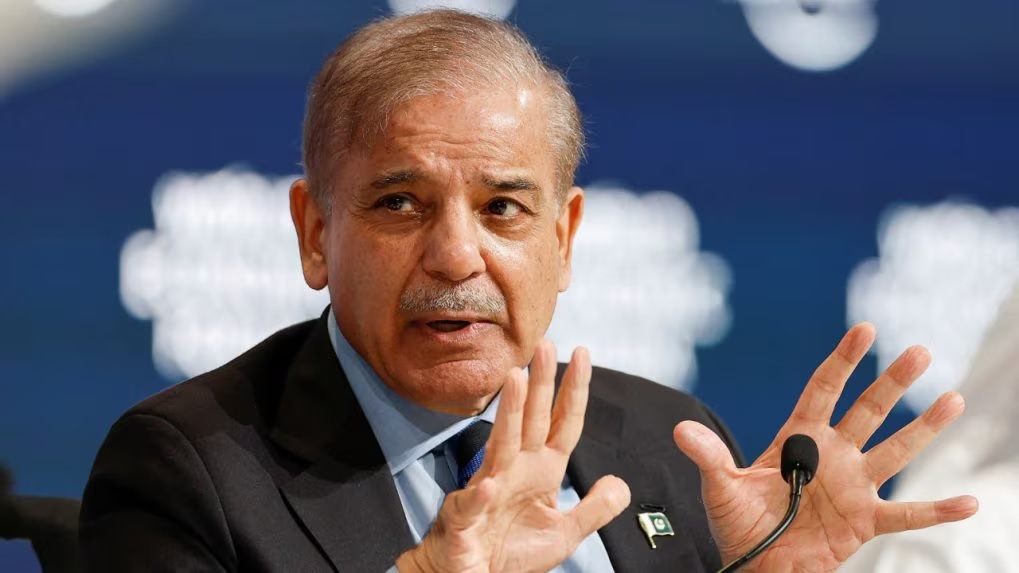 Pakistan Announces 15% Increase in Defence Budget for 2024-25 Amid Economic Crisis
Pakistan Announces 15% Increase in Defence Budget for 2024-25 Amid Economic Crisis
-
 China's Latest DF-31AG ICBM Test: A Strategic Leap in Global Missile Capabilities
China's Latest DF-31AG ICBM Test: A Strategic Leap in Global Missile Capabilities
-
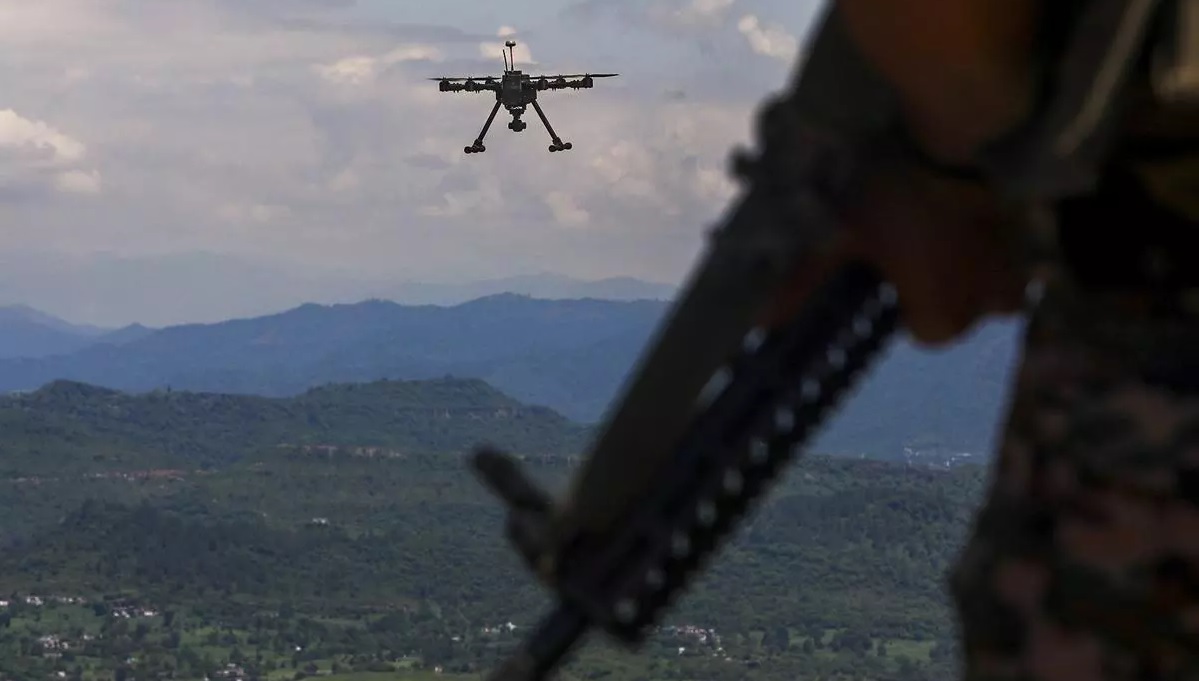 India's Defence Ministry Warns Against Chinese Parts in Military Drones Amid Security Concerns
India's Defence Ministry Warns Against Chinese Parts in Military Drones Amid Security Concerns
-
 China’s Super Radar Detects Mysterious Plasma Bubble Over Giza Pyramids
China’s Super Radar Detects Mysterious Plasma Bubble Over Giza Pyramids
-
 India's Indigenous Kaveri Engine Program with New Focus on Thrust and Performance
India's Indigenous Kaveri Engine Program with New Focus on Thrust and Performance
-
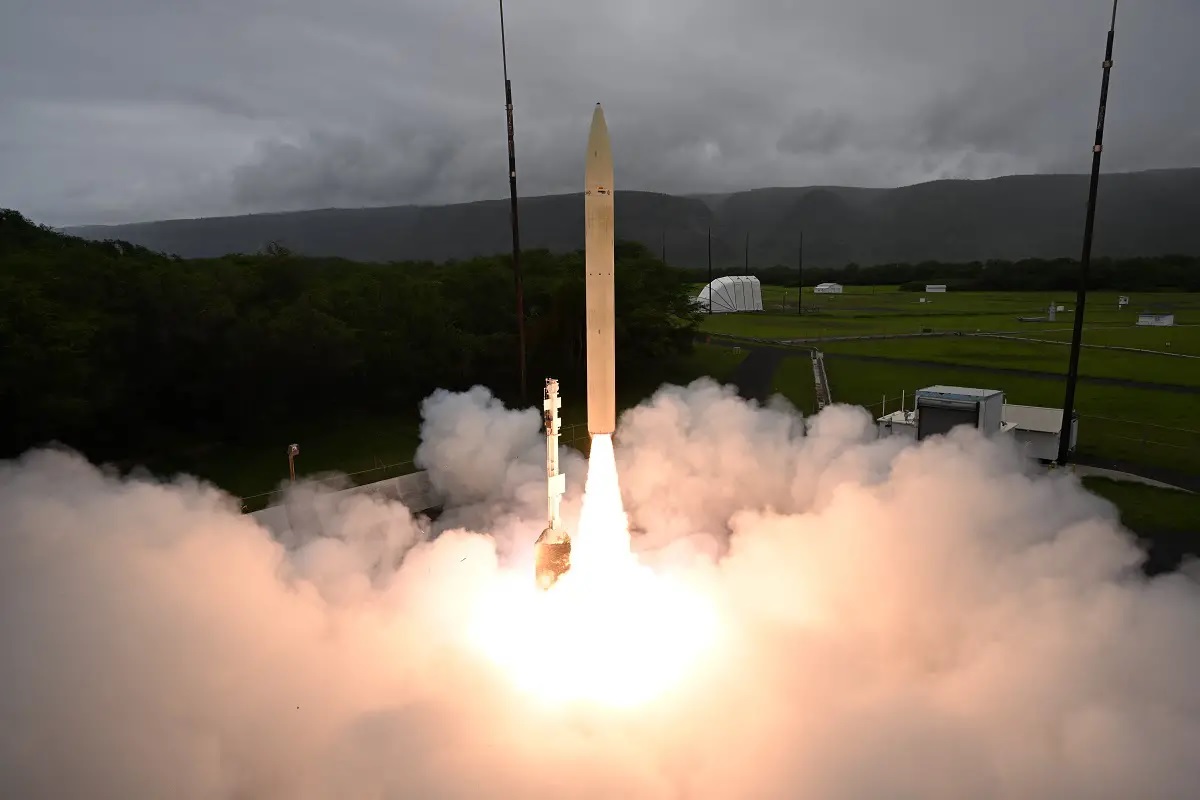 Successful Hypersonic Missile Test by U.S. Department of Defense
Successful Hypersonic Missile Test by U.S. Department of Defense
-
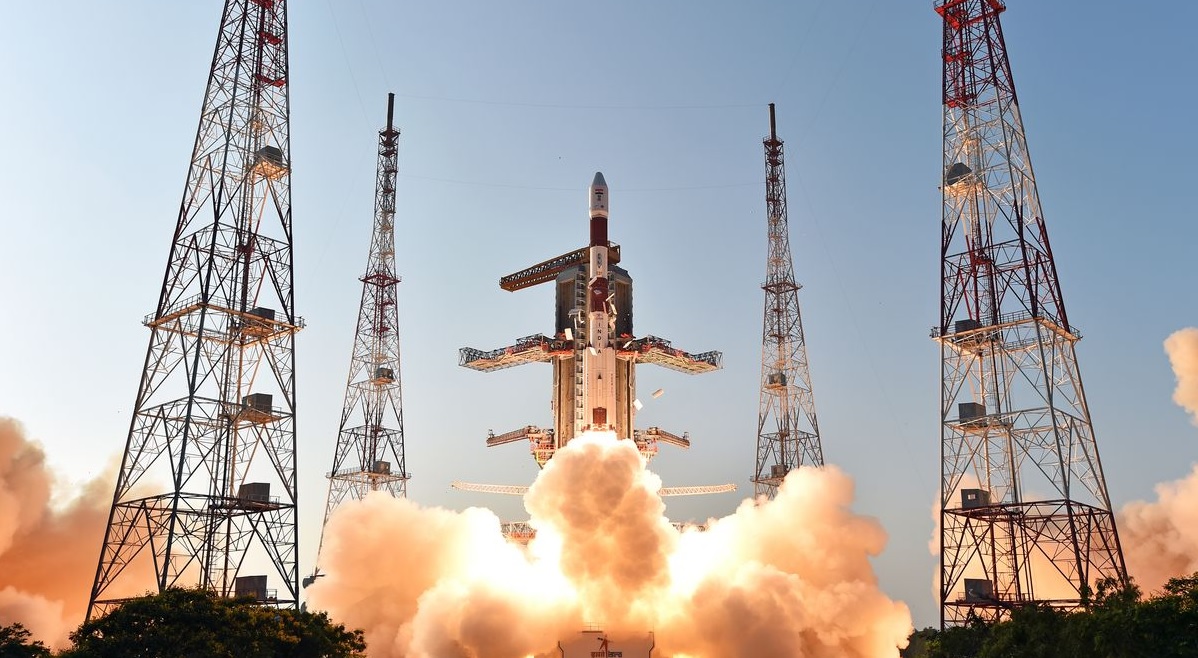 Isro Draws up Ambitious Plan for 2024, says will Launch at Least 12 Missions
Isro Draws up Ambitious Plan for 2024, says will Launch at Least 12 Missions
Top Trending in 4 Days
-
 Russian Scientists Develops Cancer Vaccine, will Distribute Free from 2025 in Russia
Russian Scientists Develops Cancer Vaccine, will Distribute Free from 2025 in Russia
-
 Zuchongzhi 3.0 vs. Google’s Willow: Chinese Quantum Computer Matches U.S. Rival in the Race for Superiority
Zuchongzhi 3.0 vs. Google’s Willow: Chinese Quantum Computer Matches U.S. Rival in the Race for Superiority
-
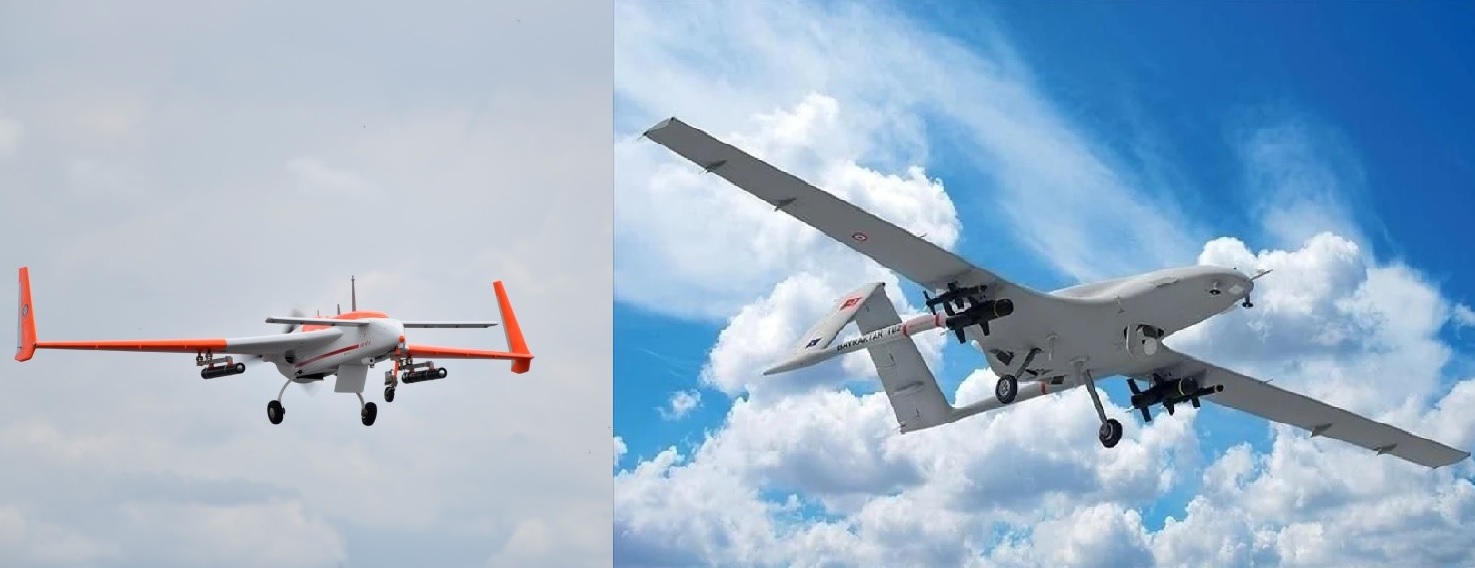 SRUAV-Weaponised vs Bayraktar TB2: A Detailed Comparison of India’s and Turkey’s Armed Drones
SRUAV-Weaponised vs Bayraktar TB2: A Detailed Comparison of India’s and Turkey’s Armed Drones
-
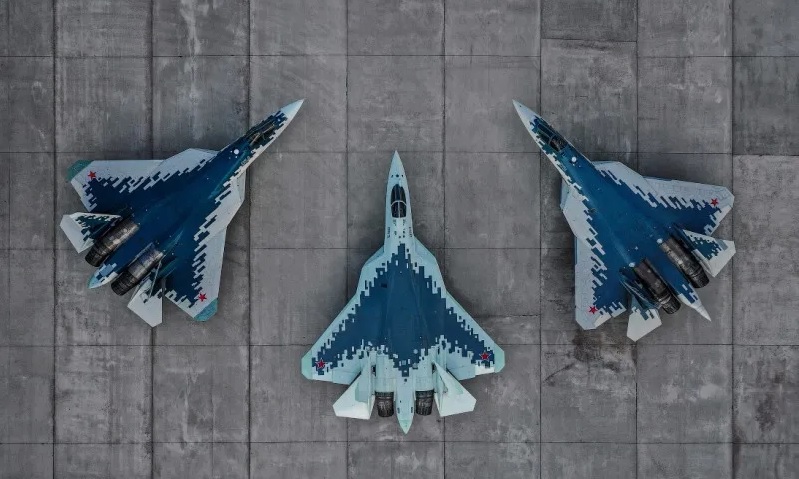 Russia to Propose 70 Su-57E Fighter Jet with AL-51F Engines G2G Deal to India During Putin's 2025 Visit
Russia to Propose 70 Su-57E Fighter Jet with AL-51F Engines G2G Deal to India During Putin's 2025 Visit
-
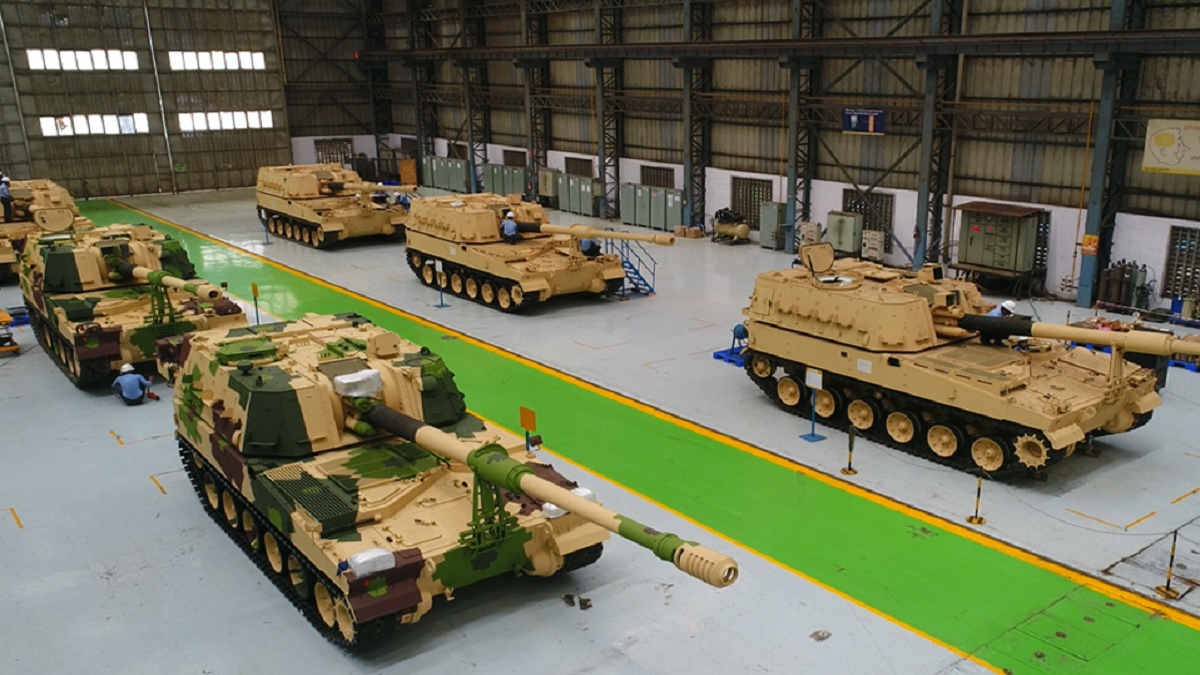 MoD Signs ₹7,628.70 Crore Deal with L&T for K9 Vajra-T Artillery Guns
MoD Signs ₹7,628.70 Crore Deal with L&T for K9 Vajra-T Artillery Guns
-
 ISRO to Launch Historic SpaDEX Mission on December 30, 2024: India’s First Space Docking Experiment
ISRO to Launch Historic SpaDEX Mission on December 30, 2024: India’s First Space Docking Experiment
-
 Japan and India Collaborate on Laser-Equipped Satellites to Combat Space Debris
Japan and India Collaborate on Laser-Equipped Satellites to Combat Space Debris
-
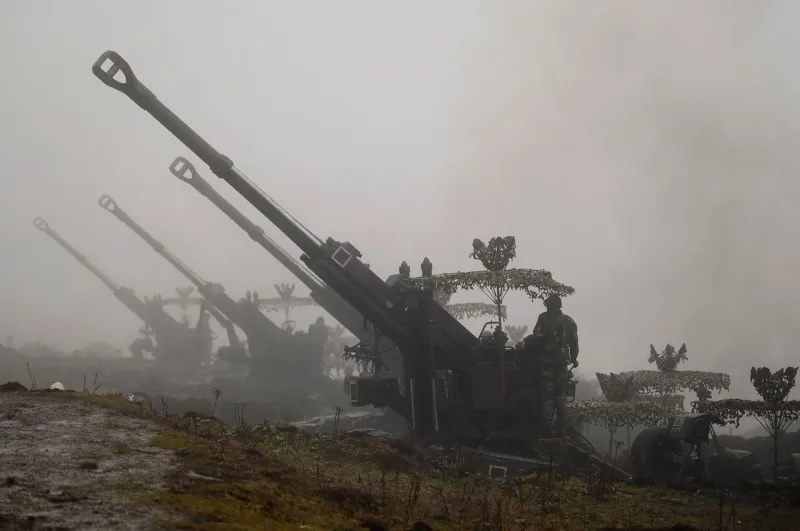 Pentagon Report: China Stations 120,000 Troops, Tanks, and Missiles Near Indian Border
Pentagon Report: China Stations 120,000 Troops, Tanks, and Missiles Near Indian Border
